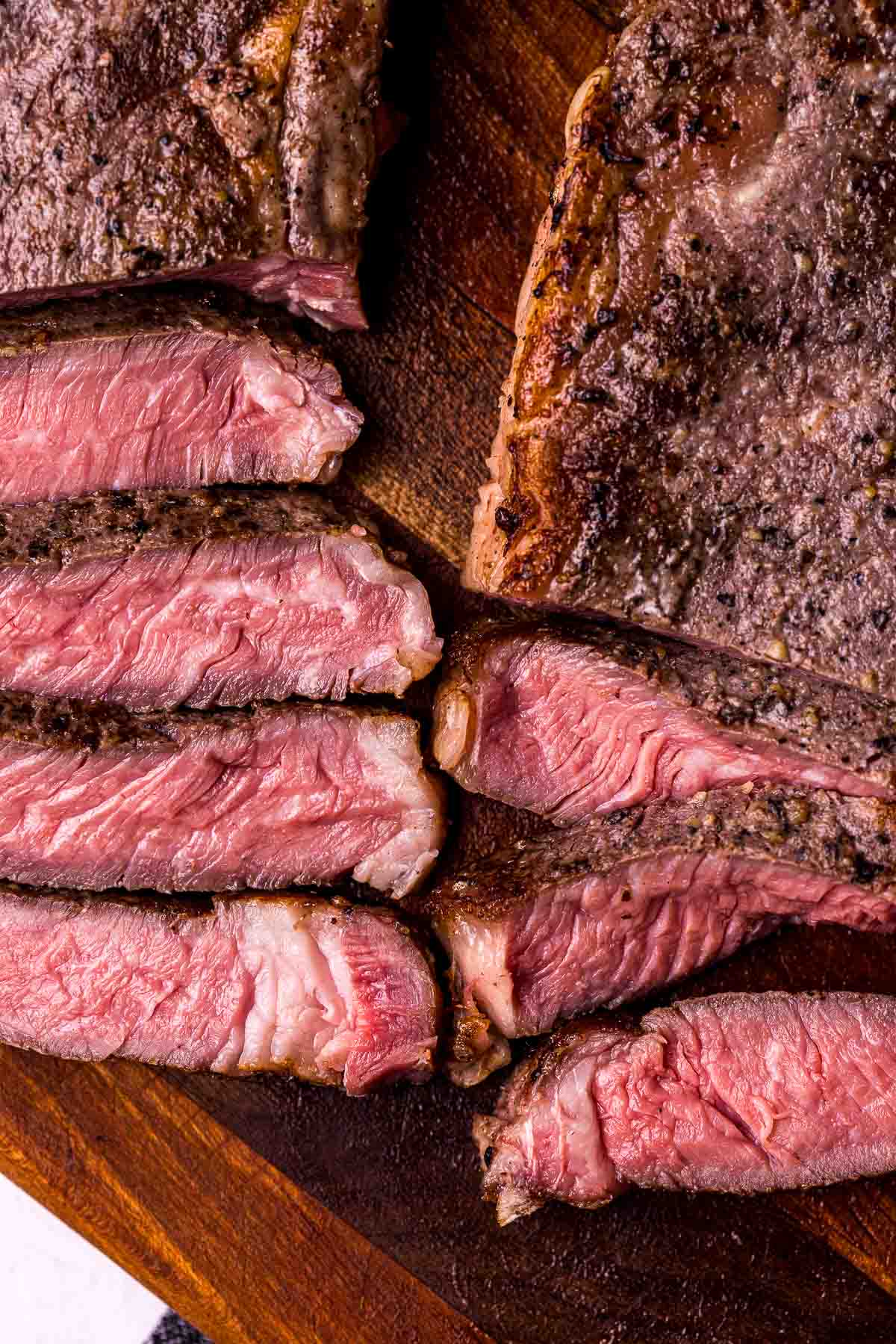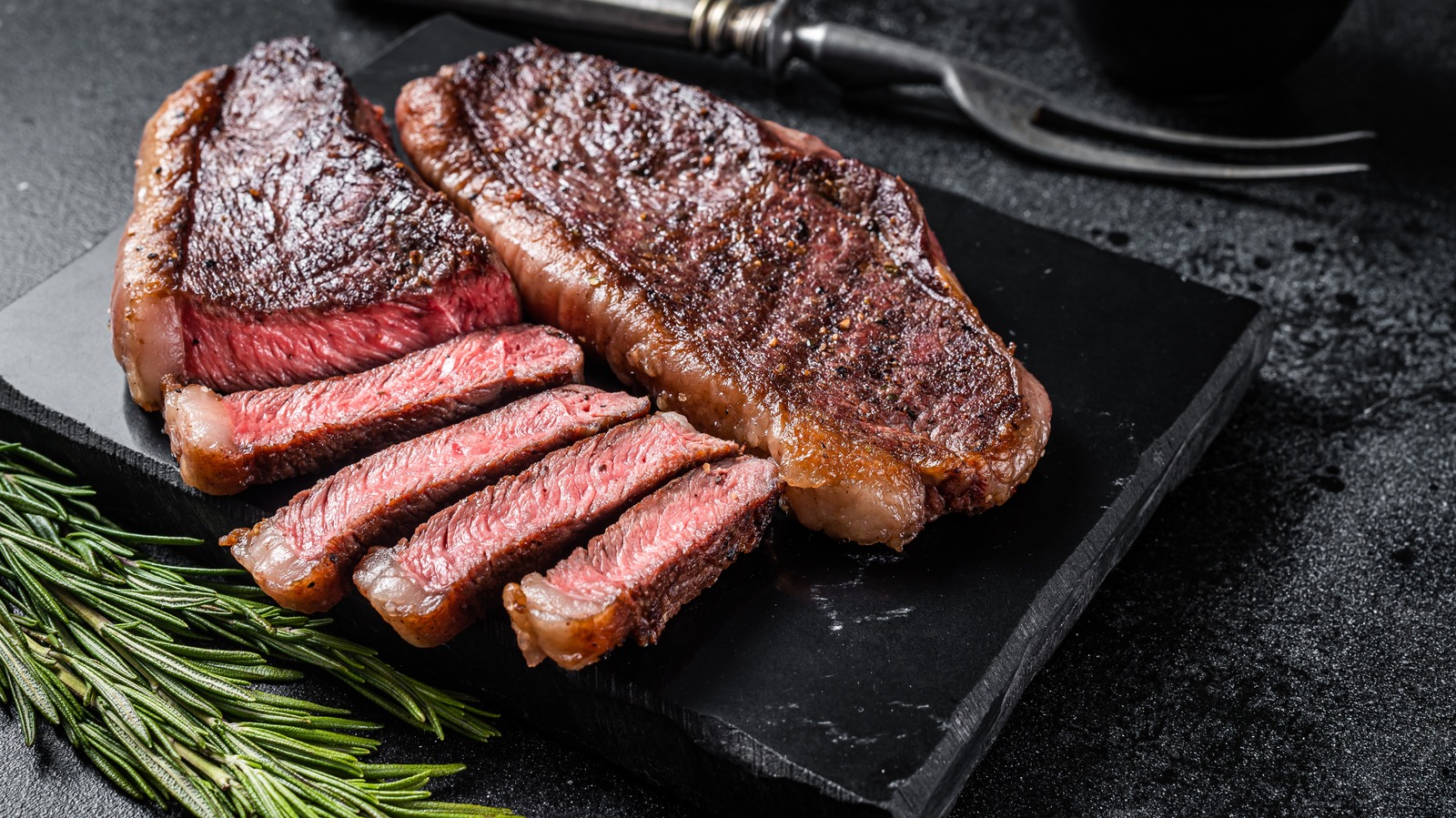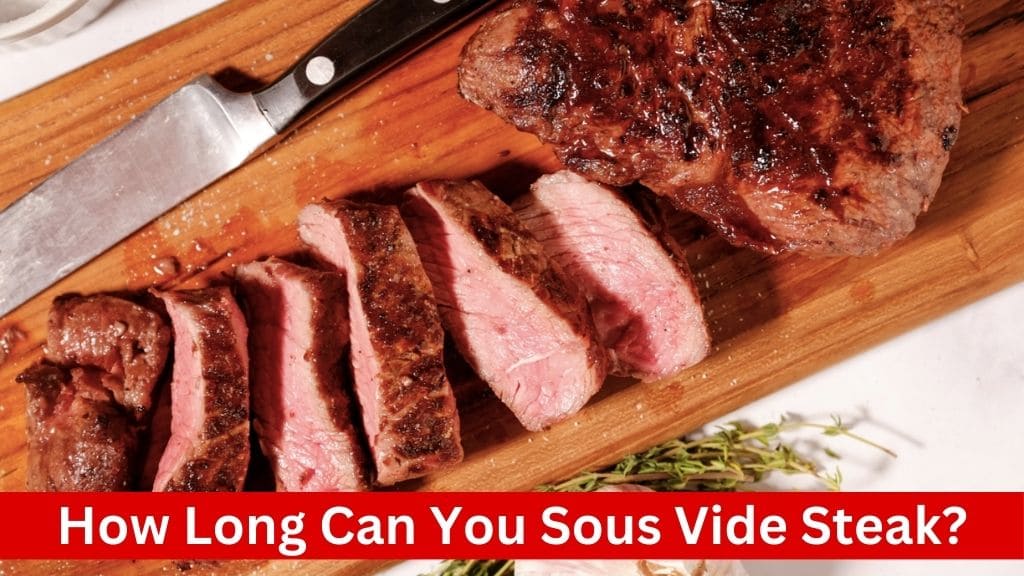Sous vide cooking has gained popularity for its precision and consistency in preparing various foods, including steak. However, one common question among sous vide enthusiasts is: how long can you sous vide steak? In this comprehensive guide, we’ll explore the factors that influence sous vide cooking times for steak, safety considerations, and tips for achieving the perfect result.
Understanding Sous Vide Cooking
:max_bytes(150000):strip_icc()/__opt__aboutcom__coeus__resources__content_migration__serious_eats__seriouseats.com__images__2015__04__Anova-Steak-Guide-Sous-Vide-Photos21-rare-to-well-5ca1cb6c6ec54ae8894f47b7773cb3d8.jpg)
How Sous Vide Cooking Works
In sous vide cooking, the food is placed in a vacuum-sealed bag, which removes air and creates a tight seal around the food. The sealed bag is then immersed in a water bath that is heated to a specific temperature using a sous vide immersion circulator or water bath device. The temperature of the water bath is precisely controlled to within a fraction of a degree, ensuring that the food cooks evenly and precisely.
Benefits of Sous Vide Cooking
Precision: One of the primary advantages of sous vide cooking is its precision. Because the temperature of the water bath can be controlled with great accuracy, sous vide allows for precise cooking of food to the exact desired level of doneness.
Consistency: Sous vide cooking also offers consistency in results. Once you determine the optimal time and temperature for a particular food item, you can achieve the same results every time you cook it sous vide, eliminating the guesswork associated with traditional cooking methods.
Tenderness: The gentle cooking process of sous vide results in incredibly tender and juicy food. By cooking food at a low, consistent temperature for an extended period, tough cuts of meat can be tenderized and rendered perfectly moist and tender.
Applications of Sous Vide Cooking: Sous vide cooking is incredibly versatile and can be used to cook a wide variety of foods, including meats, poultry, fish, vegetables, and even desserts. It is particularly well-suited for cooking proteins like steak, chicken breasts, and pork chops, as well as delicate foods like fish and eggs.
Sous Vide Equipment:
- Sous Vide Immersion Circulator or Water Bath: This device heats and circulates the water in the sous vide bath, maintaining a precise temperature throughout the cooking process.
- Vacuum Sealer: A vacuum sealer is used to remove air from the sous vide bags before cooking, ensuring a tight seal and efficient heat transfer.
- Sous Vide Bags: Specialized sous vide bags are designed to withstand the low temperatures and high heat of sous vide cooking without leaching harmful chemicals into the food.
Factors Affecting Sous Vide Cooking Time for Steak
:max_bytes(150000):strip_icc()/__opt__aboutcom__coeus__resources__content_migration__serious_eats__seriouseats.com__images__2015__04__Anova-Steak-Guide-Sous-Vide-Photos15-beauty-736633d3c3374147b8e1a78194e95dda.jpg)
Thickness of the Steak
The thickness of the steak plays a significant role in determining sous vide cooking time. Thicker steaks will require longer cooking times to ensure that the center reaches the desired temperature. Conversely, thinner steaks will cook more quickly.
Desired Doneness
The desired level of doneness, whether rare, medium-rare, medium, or well-done, will impact the sous vide cooking time. Steaks cooked to higher temperatures will require longer cooking times to reach the desired internal temperature throughout the entire thickness of the steak.
Cut of Steak
Different cuts of steak have varying densities, textures, and fat content, which can affect the sous vide cooking time. Leaner cuts may cook faster than fattier cuts due to differences in fat content and muscle structure. Additionally, tougher cuts of meat may require longer cooking times to break down collagen and become tender.
Sous Vide Temperature
The temperature of the water bath also influences the sous vide cooking time. Lower temperatures require longer cooking times to achieve the desired level of doneness, while higher temperatures result in faster cooking. It’s essential to choose the appropriate sous vide temperature based on the desired doneness of the steak.
Sous Vide Cooking Time Guidelines
To help determine the appropriate sous vide cooking time for steak, it’s helpful to refer to cooking time guidelines based on the thickness of the steak and the desired level of doneness. These guidelines can serve as a starting point for experimenting with sous vide cooking times and adjusting them based on personal preference and experience.
Monitoring Steak Temperature
While sous vide cooking provides precise temperature control, it’s essential to monitor the internal temperature of the steak using a meat thermometer to ensure that it reaches the desired level of doneness. This extra step can help prevent overcooking or undercooking and ensure perfect results.
Resting Time
After sous vide cooking, it’s essential to allow the steak to rest for a few minutes before serving. This resting period allows the juices to redistribute throughout the steak, resulting in a juicier and more flavorful end result.
Safety Considerations

Temperature Control: Maintaining proper temperature control is crucial in sous vide cooking to prevent the growth of harmful bacteria. The water bath should be set to the appropriate temperature for the desired level of doneness and kept within a safe temperature range throughout the cooking process.
Cooking Time: Ensure that the steak reaches the recommended internal temperature for safety. Cooking times may vary depending on factors such as the thickness of the steak and the sous vide temperature. Refer to reliable sources for recommended cooking times to ensure that your steak is cooked to a safe temperature.
Cooling and Storage: After sous vide cooking, it’s essential to cool the steak quickly to prevent bacterial growth. Placing the cooked steak in an ice bath or refrigerator can help cool it rapidly before storing it in the refrigerator or freezer.
Time Limits: While sous vide cooking can result in tender and flavorful steak, there is a maximum recommended cooking time to maintain food safety and quality. Extended cooking times can lead to undesirable changes in texture, flavor, and color.
Avoid Prolonged Exposure: Avoid leaving steak in the sous vide water bath for longer than the recommended maximum cooking time to minimize the risk of foodborne illness. Overcooking can also result in mushy or unappealing texture.
Vacuum Sealing: Ensure that the steak is properly vacuum-sealed before cooking to prevent water from entering the bag and compromising the seal. A tight seal helps maintain food quality and prevents contamination during cooking.
Hygiene Practices: Practice good hygiene when handling and preparing steak for sous vide cooking. Wash your hands thoroughly before and after handling raw meat, and clean all surfaces, utensils, and equipment to prevent cross-contamination.
Tips for Sous Vide Steak Success

Use High-Quality Ingredients
Choose Quality Steak: Start with a high-quality cut of steak, such as ribeye, strip loin, or tenderloin. Quality steak will yield better results in terms of flavor, tenderness, and overall eating experience.
Season Well: Season the steak generously with salt and pepper before vacuum-sealing it. This allows the flavors to penetrate the meat during the sous vide cooking process.
Proper Preparation
Vacuum Seal Properly: Ensure that the steak is properly vacuum-sealed in the sous vide bag to prevent water from entering and compromising the seal. A good seal helps maintain the integrity of the meat and prevents it from becoming waterlogged during cooking.
Add Flavor Enhancements: Consider adding aromatics such as garlic, herbs, or spices to the sous vide bag to infuse additional flavor into the steak during cooking.
Precision Cooking
Temperature Control: Set the sous vide water bath to the precise temperature recommended for your desired level of doneness. Use a reliable sous vide device to maintain consistent temperature throughout the cooking process.
Monitor Cooking Time: Keep track of the cooking time using a timer or smartphone app to ensure that the steak cooks for the appropriate duration. Refer to cooking time guidelines based on the thickness of the steak and desired level of doneness.
Finishing Touches
Sear for Flavor: After sous vide cooking, finish the steak by searing it in a hot skillet or on a grill to develop a flavorful crust. Searing adds depth of flavor and texture to the steak, enhancing its overall appeal.
Rest Before Serving: Allow the steak to rest for a few minutes after searing to allow the juices to redistribute evenly throughout the meat. This helps ensure that each bite is juicy and flavorful.
Experiment and Adjust
Customize to Taste: Experiment with different seasoning blends, cooking times, and finishing techniques to find the perfect combination that suits your taste preferences.
Take Notes: Keep a record of your sous vide cooking experiments, noting the specific parameters used and any adjustments made. This allows you to replicate successful results and refine your technique over time.
Conclusion
Sous vide cooking offers a precise and consistent method for preparing steak to perfection. By understanding the factors that influence sous vide cooking times, following food safety guidelines, and implementing tips for success, you can enjoy delicious, restaurant-quality steak in the comfort of your own home. Experiment with cooking times and temperatures to discover your ideal sous vide steak experience.

